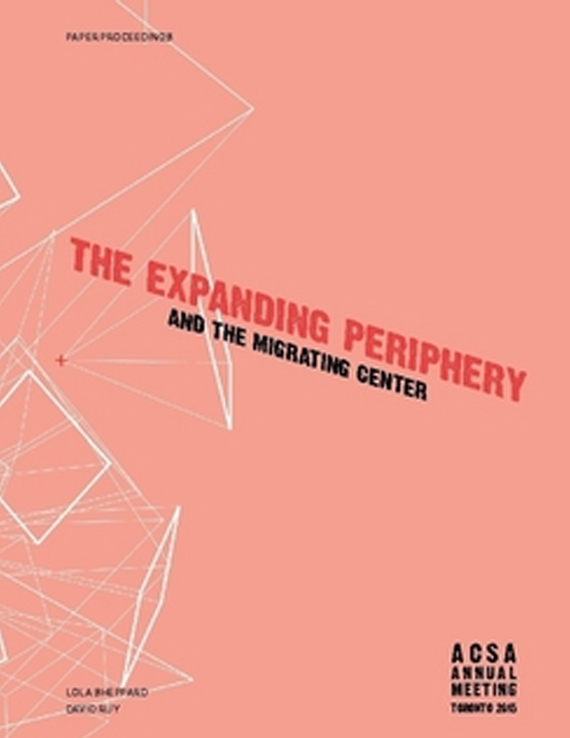Author(s): Clark Thenhaus
During the last few decades two broad categories became increasingly apparent; a territorial practice and a digital project. This is marked on one hand by a territorial model of relations of socio-economic, environmental, and political forces aiming to integrate ecological systems, infrastructural networks, and social collectives staked against ‘form hunters’. On the other hand, the digital project claimed technology’s capacity to reinstate disciplinary expertise and customization as aesthetic, geometric data-managing, and ideological drivers. In the expanded field of relations, the terms and conditions of networking, and connectivity re-located a disciplinary project of form-making to consequences of political, infrastructural, or environmental forces. In the digital project, these same culturally pervasive terms, networks and connectivity, largely produced aesthetic demonstrations of connected complexities (honeycombs, Voronoi’s, Delauny meshes) and a concentration on digital virtuosity, a sign of a time marked by intricacy, fields, and fineness. It seems appropriate to ask what are alternatives for a contemporary formalism as attention to objects, history, figure, coarseness, volume, and association supplant fields, invention, networks, elegance, surface, and sensation? This paper engages new modes of architectural thought dedicated to form. The goal is to dove-tail post-digital formalism with emerging disciplinary and ideological shifts that go Beyond Relationism. Specifically, attention is called to distinctions between legible and ambivalent form in an effort to synthesize these terms aiming to “continue disciplinary formalism by fusing classical knowledge with emerging technologies.” Through this, perhaps new forms of architecture will take the stage; ones that eschew the transference of net-based concepts to the aesthetics of form.
Volume Editors
David Ruy & Lola Sheppard
ISBN
978-0-935502-95-4

 Study Architecture
Study Architecture  ProPEL
ProPEL 
